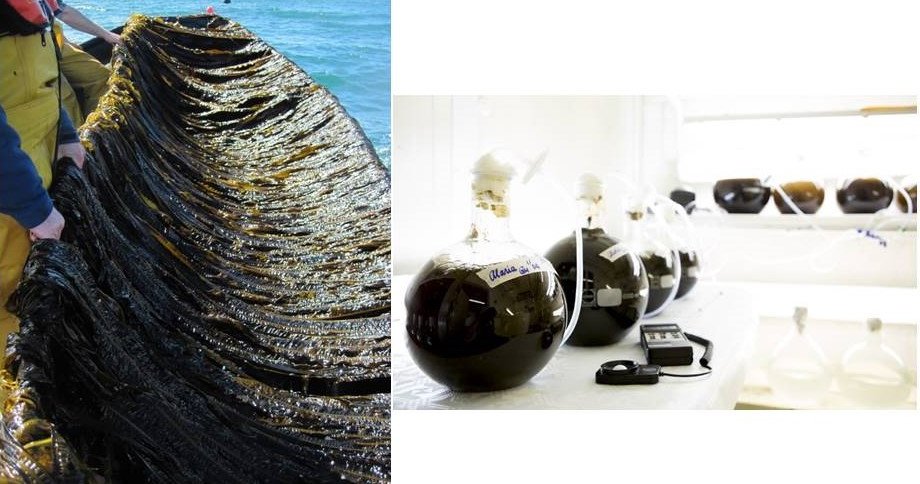
Macroalgae or seaweed are macroscopic aquatic plants belonging to the phyla Chlorophyta, Rhodophyta or Phaeophyta. They survive in seawater where the light is sufficient to support photosynthesis and need an attachment point, therefore most commonly inhabit the litoral zone. Macroalgae and macroalgal detritus have been shown to be essential feed sources for benthic organisms. Thanks their phototropic behavior, they can sequester carbon dioxide in the ocean and release oxygen. Positive aspect of seaweed is the ability to grow quickly without occupy arable land.
Macroalgae are extensively used for several scopes as in medicine and pharmaceutical sectors or for production of biogas, fertilizers and edible packaging. Seaweed is also used for regeneration of water environments by exploiting its ability in removing undesirable compounds from the water, such as ammonia, ammonium nitrate, nitrite phosphate, iron, copper and CO2. Macroalgae are also used in food and feed production and it was demonstrated that by adding seaweed to livestock feed, the methane emissions can be reduced.
Macroalgae production is realized in open sea as well as in tanks. Since they cannot be propagated by vegetative techniques, their rearing is governed by their biological cycle. Therefore development of macroalgae is carried out during the winter season and their harvesting happens between March and May.




